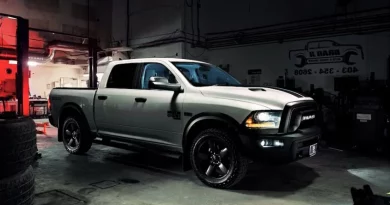2025 Dodge Charger Sixpack Roars In With New Inline-Six, And It Means Business
Muscle Cars Aren’t Dead Yet—Just Louder in a Different Way
Dodge has dropped a short but striking preview of the 2025 Charger Sixpack—and it’s got gearheads talking. The big reveal? A 12-second video showing off the exhaust note of its new twin-turbo inline-six engine. It’s not a V8, and Dodge isn’t pretending it is. But make no mistake, this engine wants your attention.
While the electric Charger Daytona has already made headlines, the Sixpack brings something back to the table that many fans thought was gone for good: gasoline-powered muscle with real teeth.
Listen Up: The New Inline-Six Isn’t Shy
Dodge’s teaser didn’t offer much in terms of visuals, but the sound is what really matters here. The exhaust note from the Hurricane inline-six is sharp, punchy, and totally different from the low rumble of a HEMI V8. It’s more refined, maybe, but still aggressive. Think tuned aggression rather than brute force.
If you were worried Dodge would try to fake a V8 sound through software or play it safe, this clip makes it clear—they’re going their own way. And it’s working.
Meet the Hurricane
Under the hood, you’ll find a 3.0-liter twin-turbo inline-six called “Hurricane.” If that name rings a bell, it’s because this same engine has already been used in higher-trim Jeeps and Ram trucks. In the Charger, it’s expected to come in two flavors: a Standard Output version around 420 horsepower, and a High Output trim packing over 500 horses.
This puts the Sixpack in solid muscle car territory—roughly in line with the old Charger Scat Pack and knocking on the door of entry-level Hellcat performance. It’s also rumored to pack more than 470 lb-ft of torque, and with standard AWD on deck, it’ll put power down much more efficiently than past models ever could.
Platform, Design, and More Muscle
The 2025 Charger rides on Stellantis’ new STLA Large platform—a flexible layout that supports both EVs and traditional gas engines. That means the electric Daytona and the gas-powered Sixpack share a similar chassis, making the lineup more versatile than ever.
Expect the new Charger to arrive first as a coupe, with four-door models possibly coming later. The design pulls heavily from Dodge’s retro playbook broad shoulders, dramatic LED lighting, and a fastback silhouette that tips its hat to the golden era of Detroit muscle.
Inside the Cabin
No official images of the interior yet, but don’t expect bare-bones. Dodge has been stepping up its game lately with tech and finishes. Look for a massive touchscreen running the latest Uconnect system, plus dedicated performance modes, active exhaust controls, and driver-centric displays built for people who like to play with boost and launch control settings.
This One’s Not Just for Show
The bigger takeaway here is what this car represents. At a time when most automakers are moving away from internal combustion, Dodge is doubling down—offering both EV and gas versions of the Charger. That’s bold, and frankly, refreshing.
They’re not trying to apologize for the Sixpack’s existence or repackage it as some hybrid half-measure. It’s a muscle car, period. Just with an inline-six instead of eight cylinders.
When’s It Coming and What’s the Damage?
Dodge hasn’t dropped full details yet, but the official reveal is expected later this summer. Deliveries could begin as early as early 2025. Pricing isn’t confirmed, but insiders estimate a starting point in the low $50,000 range for the base Sixpack, with the high-output trim stretching into the $60Ks.
Why This Matters
The Charger Sixpack isn’t just a new trim level. It’s Dodge’s answer to a question the entire industry is asking: can performance cars survive the EV era? The answer, at least for now, is yes—but only if they evolve.
With the Sixpack, Dodge is trying to preserve the feeling of muscle without clinging to old formulas. It may not sound like a V8, but it doesn’t need to. It sounds fast, focused, and alive—and that’s what really counts.




